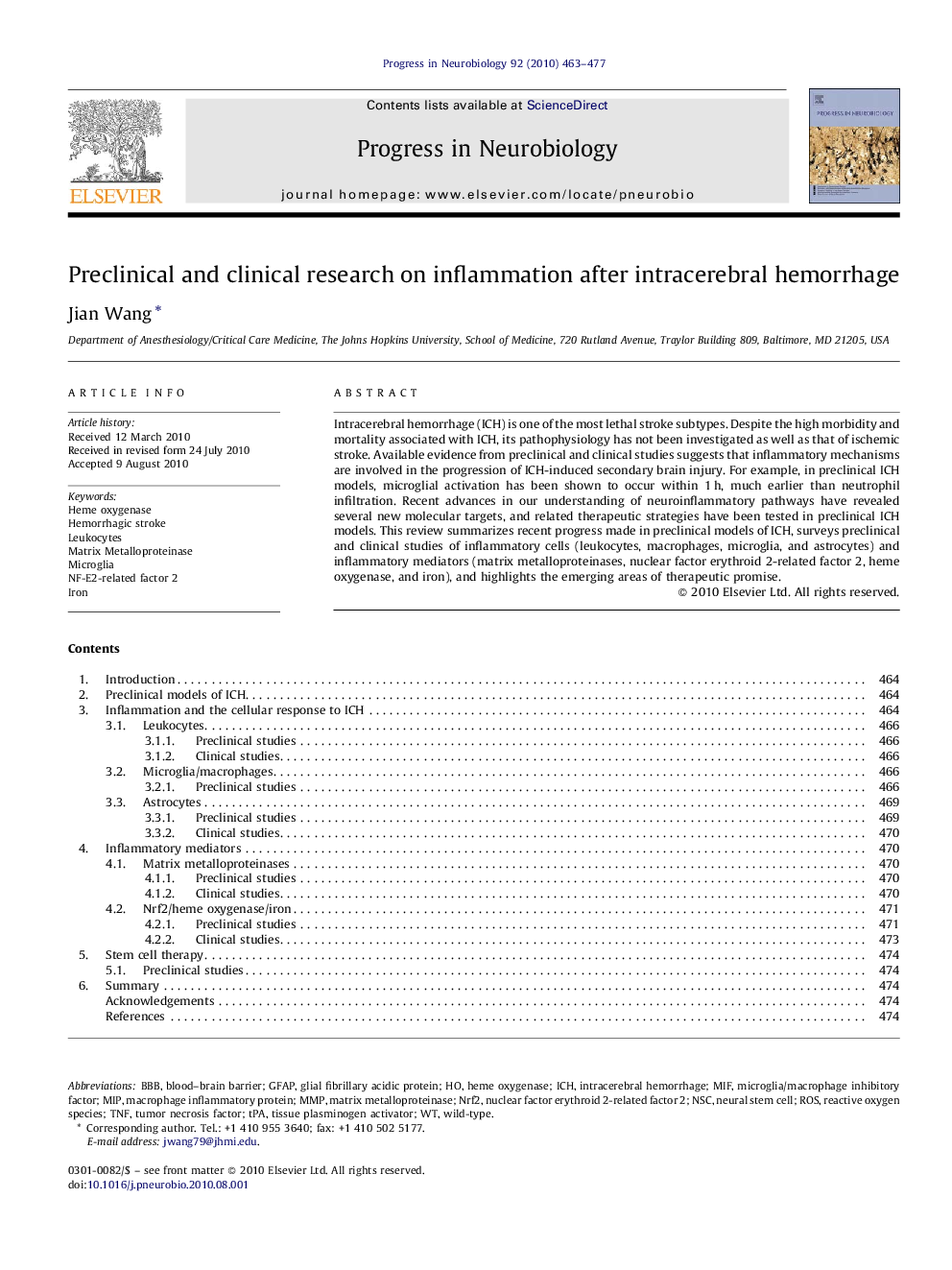| Article ID | Journal | Published Year | Pages | File Type |
|---|---|---|---|---|
| 4353517 | Progress in Neurobiology | 2010 | 15 Pages |
Intracerebral hemorrhage (ICH) is one of the most lethal stroke subtypes. Despite the high morbidity and mortality associated with ICH, its pathophysiology has not been investigated as well as that of ischemic stroke. Available evidence from preclinical and clinical studies suggests that inflammatory mechanisms are involved in the progression of ICH-induced secondary brain injury. For example, in preclinical ICH models, microglial activation has been shown to occur within 1 h, much earlier than neutrophil infiltration. Recent advances in our understanding of neuroinflammatory pathways have revealed several new molecular targets, and related therapeutic strategies have been tested in preclinical ICH models. This review summarizes recent progress made in preclinical models of ICH, surveys preclinical and clinical studies of inflammatory cells (leukocytes, macrophages, microglia, and astrocytes) and inflammatory mediators (matrix metalloproteinases, nuclear factor erythroid 2-related factor 2, heme oxygenase, and iron), and highlights the emerging areas of therapeutic promise.
Research highlights▶ Summarizes recent progress made in preclinical models of ICH. ▶ Surveys preclinical and clinical studies of inflammatory cells and mediators. ▶ Highlights the emerging areas of therapeutic promise.
